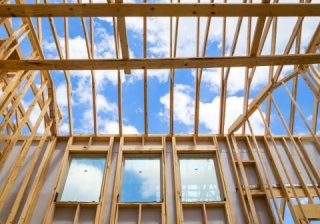Jul 8 2015
A research group of the UPV/EHU-University of the Basque Country has developed a methodology to assess the environmental sustainability of timber structures
The IT 781-13 group (UPV/EHU) has for the last ten years been conducting research into building structures and materials (concrete, steel and timber). According to its latest piece of research, timber is a very light, tough material which is being increasingly used in building due to the fact that it is a renewable item and consumes little energy in the manufacturing process. According to this research, the environmental sustainability of timber structures can also be improved if various criteria relating to this material and its use are applied.

Mikel Zubizarreta, a member of the UPV/EHU's IT 781-13 group, highlights the advantages of timber in building works: "Although it is not as tough as other materials used in structures, it is a better insulator, in other words, it is more energy-efficient and less dense so the structure weighs less. On the other hand, timber is a renewable material -trees are planted and grown and forests are a CO2 sink- and is abundant in the Basque Country (nearly 55% of its surface area consists of forests)."
Yet timber is used much less than concrete and steel in building. Zubizarreta says the reason is as follows: "People are somewhat wary of the idea of living in a wooden house: it's an organic material, it's less consistent that concrete or steel and can catch fire, etc." In this researcher's view, the reason for this wariness is largely a cultural one: "Today, there are excellent treatments to improve the durability of timber; with respect to behaviour in the event of fire, the CTE-M standard specifies how the structure has to be designed. In the north of Europe (Germany, Scandinavia, etc.), for example, timber is widely used to build homes despite the fact that the climate is much harsher than ours."
Despite all, the IT 781-13 researcher is convinced that timber is set to be used more and more in house building: "As I see it, timber use will increase for various reasons; they include the fact that the Government of the Basque Autonomous Community (region) is encouraging its use and that the Basque Country has a large wooded surface area. With a proviso: the forest has to be cared for, properly managed, it has to be reforested, etc. That way, jobs and wealth will be created and timber will have higher added value".
Sustainability is not just an environmental issue
The fact that a house is made of timber "does not automatically make it more sustainable than another one," insisted Zubizarreta. "From an environmental perspective, it is true that timber is more sustainable than concrete and steel. But sustainability also depends on other factors (social responsibility and economic development, among other things), and timber management must take them all into consideration. If timber is imported from Australia, for example, to build a house, transporting it will significantly increase CO2 emissions; what is more, here it creates neither jobs nor wealth. So a house built of this material cannot be described as more sustainable than one of concrete or steel."
The IT 781-13 group has in fact developed a tool for measuring the environmental sustainability of timber structures, in accordance with the criteria of the MIVES research methodology. This methodology has in this case been used to produce an Environmental Sustainability Index for these structures taking various criteria and indicators into account. Each indicator is given a specific relative weight; it is then assigned a value function and, finally, an index of between 0 and 1 is obtained. Before the IT 781-13 group explored these timber structures, they looked at the Environmental Contribution Index of Concrete Structures (2008) and the Index of Steel Structures (2011).
Additional information
The group that conducted the study goes by the name "IT781-13. Integral Sustainability in building systems and their materials", and comprises lecturers and researchers at the Faculty of Engineering in Bilbao. The following people have participated in this piece of research: Jesús Cuadrado, Doctor of Mechanical Engineering; Belinda Pelaz, architect; Ignacio Marcos, Doctor of Mechanical Engineering, Mikel Zubizarreta, an Industrial Management Engineer.
The research was carried out at the Faculty of Engineering in Bilbao with grants and assistance from the Government of the Basque Autonomous Community and the UPV/EHU.
Bibliographical reference
J. Cuadrado, M. Zubizarreta, B. Pelaz, I. Marcos: ‘Methodology to assess the environmental sustainability of timber structures' in Construction and Building Materials, July 2015, pages 149-158.